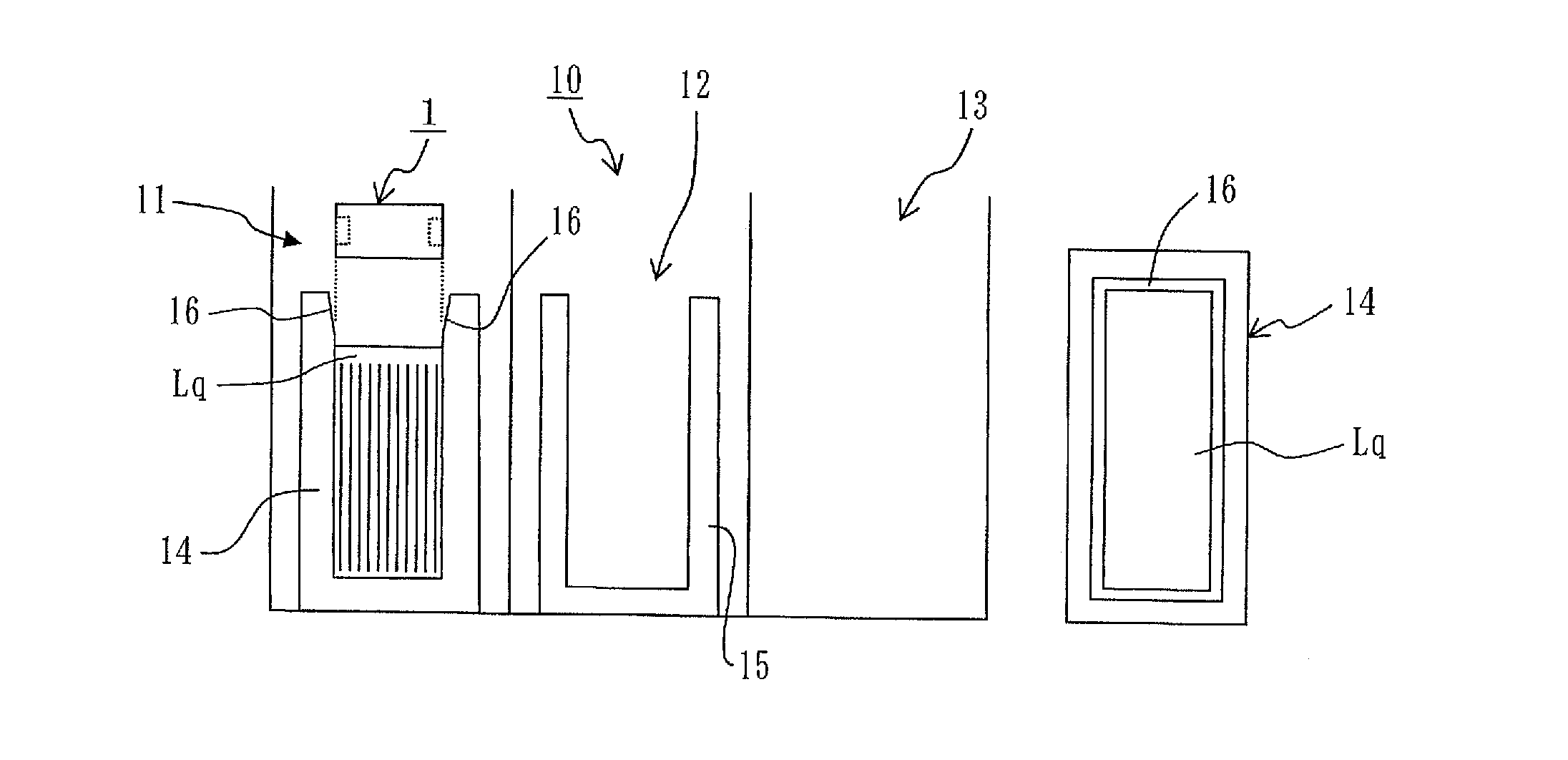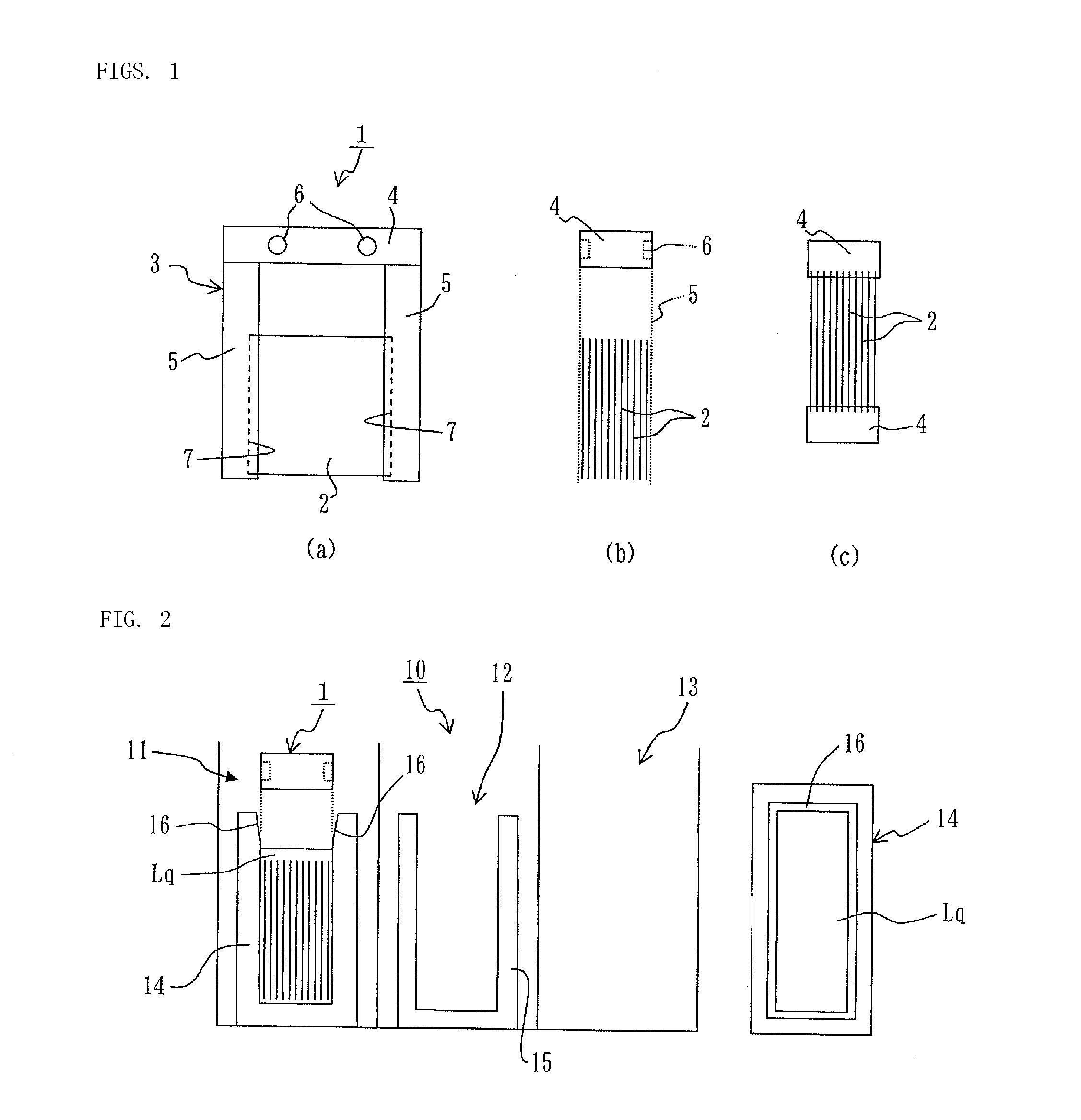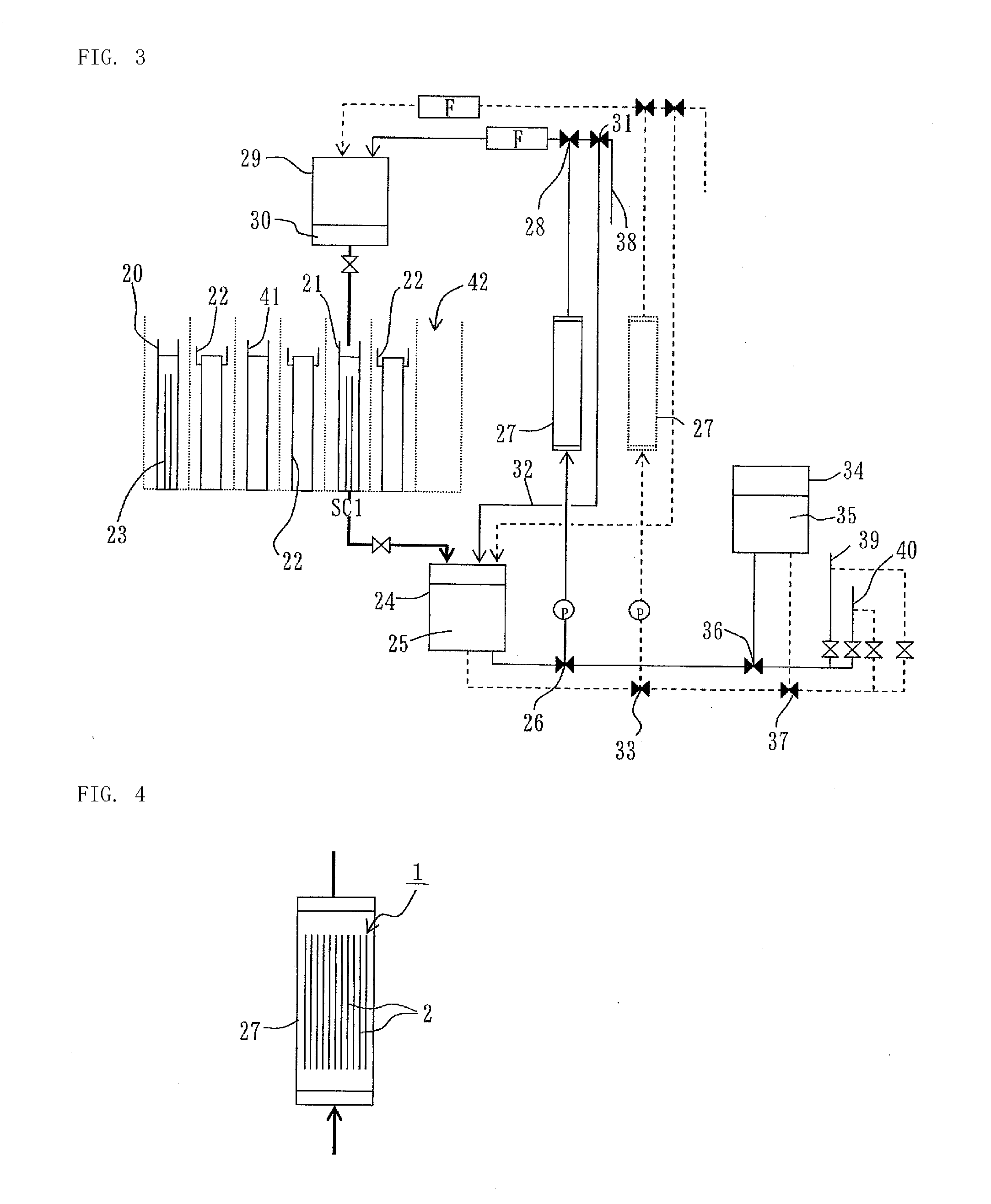Method for purifying alkaline treatment fluid for semiconductor substrate and a purification apparatus
a technology of alkaline treatment liquid and purification apparatus, which is applied in the direction of filtration separation, silicon compounds, separation processes, etc., can solve the problems of deterioration of electric characteristics of devices, pattern defects, and tmah aqueous solution being liable to be contaminated with metals, and it is difficult to prevent completely contamination derived from storage containers, etc., to achieve strong adsorption purification, strong adsorption performance, and high adsorption performan
- Summary
- Abstract
- Description
- Claims
- Application Information
AI Technical Summary
Benefits of technology
Problems solved by technology
Method used
Image
Examples
example 1
[0084]Two silicon carbide single crystal (6H) wafers each having a diameter of 75 mm were used to take preliminarily atomic force microscope (AFM) images of the mirror surfaces of these wafers. After that, the mirror surfaces were positioned so as to face to each other, and an adsorbing plate laminate having a slit gap with a gap of 0.5 mm of Example 1 was formed in the same manner as that in the Fe adsorption purification experiment described previously.
[0085]Radioactive 59Fe was added into the above-mentioned 5-wt % choline aqueous solution, yielding a test liquid having a radioactive 59Fe concentration of 100 ppt, and the adsorbing plate laminate of Example 1 and the test liquid were used to carry out an Fe adsorption purification experiment under room temperature in accordance with the same procedure as that in the Fe adsorption purification experiment described previously, thereby calculating the remaining ratio of radioactive 59Fe in the test liquid.
[0086]After that, the insid...
example 2
[0091]Based on the findings of the Example 1, an adsorbing plate laminate 1 illustrated in FIGS. 1(a) to 1(c) was constructed as adsorption purification means for an alkaline treatment liquid. The adsorbing plate laminate 1 is constituted of a set of 11 adsorbing plates 2 each having a thin plate shape cut out from a CVD polycrystal dummy wafer (K≈0.3, front and back surfaces with good hydrophilicity) having a thickness of 0.6 mm by a laser process so as to have a size of 100 mm by 102 mm and a holding cassette 3 made of a fluororesin (PTFE) for holding the adsorbing plates 2 with a predetermined interval (usually 0.8 to 3.0 mm, preferably 1 to 2 mm) to each other, with a parallel state to each other, with the state of facing to each other. Further, the holding cassette 3 is constituted of a cassette ceiling portion 4 having a recessed portion 6 for connecting to a robot arm (not shown) for transporting and positioning the adsorbing plate laminate 1 and a pair of cassette arm portio...
example 3
[0103]In order to use high-purity silicon carbide grains each having a grain diameter of 0.2 to 1.2 mm (GNF-CVD manufactured by Pacific Rundum Co. Ltd.), which are a single crystal material, as an adsorption purification agent, the silicon carbide grains were dipped and cleaned preliminarily in each of a choline stock solution and nitric acid for several days. After that, a fluororesin column having an inner diameter of 20 mm and a length of about 120 mm was filled with 60 g of the cleaned silicon carbide grains (an apparent volume of about 30 mL), thereby constituting an adsorbent-packed column. 500 mL each of various liquids were passed through the column, starting from a 7-wt % nitric acid aqueous solution, followed by ultrapure water, 2-wt % hydrofluoric acid / 1-wt % hydrogen peroxide aqueous solution, and ultrapure water, in the stated order, and then a purification experiment of a test liquid was performed.
[0104]Further, a 4 wt % choline aqueous solution (choline stock solution...
PUM
| Property | Measurement | Unit |
|---|---|---|
| surface reflectance | aaaaa | aaaaa |
| area | aaaaa | aaaaa |
| grain diameter | aaaaa | aaaaa |
Abstract
Description
Claims
Application Information
 Login to View More
Login to View More - R&D
- Intellectual Property
- Life Sciences
- Materials
- Tech Scout
- Unparalleled Data Quality
- Higher Quality Content
- 60% Fewer Hallucinations
Browse by: Latest US Patents, China's latest patents, Technical Efficacy Thesaurus, Application Domain, Technology Topic, Popular Technical Reports.
© 2025 PatSnap. All rights reserved.Legal|Privacy policy|Modern Slavery Act Transparency Statement|Sitemap|About US| Contact US: help@patsnap.com



